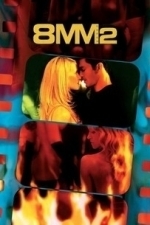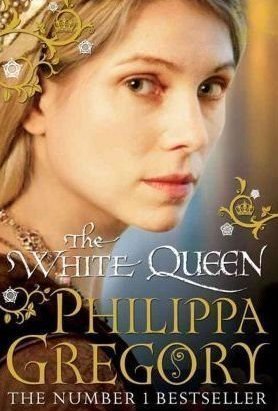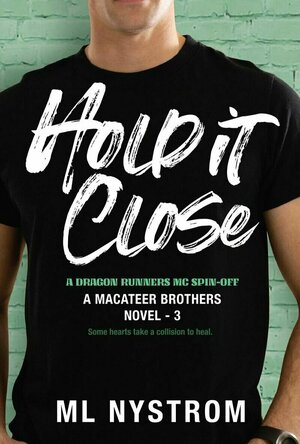Darren (1599 KP) rated 8MM 2 (2005) in Movies
Jun 20, 2019
When the couple receive photos of their threesome they try to figure out who took them leading them into the sexual underworld in Hungry. While trying to clean up the blackmailing the two find themselves being approached from all angles as they try to keep any political career undercover.
8MM 2 is a film with one of the most miss-leading titles in film history, it is advertised as a sequel to 8MM starring Nicolas Cage which is about going into the underworld of sex. This is a boring political drama cover up after a daughter and her fiancée end up in a sex tape and get blackmailed. Nothing about this makes any sense for it to be a sequel but only uses the name because of the standard below average story. to make matters worse this might as well just be a softcore film because you can pretty much guarantee there is more time when the women are naked more than actually clothed.
Actor Review
Johnathon Schaech: David is the young lawyer entering into a powerful family as he tries to rise up the ranks in the Hungarian Embassy. When he has a steamy threesome with his wife to be and a strange woman he finds himself having to go into the world of pornography to uncover the people trying to blackmail him. Johnathon is solid but basic in this role.
Lori Heuring: Tish is the wife to be for David, her father is the Ambassador making her have a high profile name in social circles. She ends up having to follow David into the underworld of the sex industry to find the tape from their night. Lori is solid in this role without being special.
Bruce Davison: Ambassador Harrington is the father of Tish he is highly respected and the night the two have together could find themselves being responsible for a problem in his career. Bruce gives us a very basic supporting performance that we just don’t see enough.
Julie Benz: Lynn is the sister of Tish that is the older one of the two who always wants to protect her younger sister. Julie is wasted in this supporting role.
Support Cast: 8MM 2 has a basic supporting cast where nearly all the female cast are naked with most not really having much going on.
Director Review: J.S. Cardone – J.S. really doesn’t give us a worthy sequel that lacks any of the important parts needed.
Mystery: 8MM 2 doesn’t really offer us a mystery because we don’t see what the big mystery is.
Thriller: 8MM 2 doesn’t keep us on edge at all.
Settings: 8MM 2 is set in Hungary without being anything special.
Special Effects: 8MM 2 has basic effects when needed but nothing fancy.
Suggestion: 8MM 2 is one just to avoid really because it is terrible. (Avoid)
Best Part: Final Twist.
Worst Part: Pointless amount of nudity.
Believability: No
Chances of Tears: No
Chances of Sequel: No
Post Credits Scene: No
Oscar Chances: No
Runtime: 1 Hour 46 Minutes
Tagline: From The Last Kiss To The Last Breath… From The First Kiss To The Last Breath.
Trivia: Much of the sex depicted is actual not simulated.
Overall: Dreadful sequel that really doesn’t work.
https://moviesreview101.com/2016/06/12/franchise-weekend-8mm-2-2005/
BookwormMama14 (18 KP) rated The Bachelor Girl's Guide to Murder (Herringford and Watts, #1) in Books
Jan 2, 2019
I can honestly say that by page 10 of the novella (A Singular & Whimsical Problem), I was addicted to Herringford & Watts! From the cover design of the book to the quirky traits of these two women, I will treasure their story for many years to come. Let's talk about the book itself for a minute. There are several different aspects to the layout that intrigued me. First of all, the silhouettes on the cover (aren't they gorgeous), can be found at the beginning of each chapter as well, with artwork. Giving a deeper impression of the era. There are lovely quotes at the beginning of each chapter as well. Throughout the book you will find footnotes. Not referencing history books, but referencing our characters and addressing the reader personally. This dynamic didn't just draw me into the story, oh no, it gobbled me up and left me wandering the streets of Toronto, trying to walk without using my hips...Through these footnotes we learn a lot about all of our characters, without the need of an extra hundred pages, although I wouldn't have complained about that either.
The story is one of the most beautifully crafted books I have ever read. I am a HUGE fan of Sherlock and Murdoch Mysteries. And to have a story similar to those with women playing the lead...Brilliant! While we see the story through the perspective of different characters, it is mainly through Jem's eyes. Throughout their crime solving adventure, we can see the strength and determination of these women to do the right thing. Jem and Ray both look to the Lord for guidance and are comforted and encouraged by His voice and His peace. While God is a puzzle too big to solve for Merinda at this point. If you enjoy a good mystery with a lot of humour and some faith...THIS is the book for you! There are pins and needles that I am sitting on, waiting for the next book to come out!
Deborah (162 KP) rated The White Queen (The Plantagenet and Tudor Novels, #2) in Books
Dec 19, 2018
While not the worst book I've ever read I know I won't be reading this again and as to The Red Queen - well, I'd probably want to strangle Margaret Beaufort before the first chapter was out, so let's leave it at that shall we.
I do read a lot of historical novels and in general I find that it is much harder for a novel to work well when it is written in the first person, as this is. With a single viewpoint you are restricting yourself and that shows here at several points where the author has to break out of the Elizabeth Woodville narrative to give us a chunk of what is going on elsewhere. I've never found EW a particularly sympathetic historical character and I'm not sure she comes across that well here, either. Certainly in the latter half of the book it's difficult to see what motivation Gregory is ascribing to her.
The family of EW's mother did believe themselves descended from a water goddess and it was not unusual for powerful women to be accused of witchcraft, to discredit either them or their husbands (see Eleanor Cobham). I daresay that mixing of love potions and use of figures and all that sort of thing would have gone on, but the whistling up of storms was going just a bit too far for me. I also thought that the Foreshadowing element of the story was a bit overdone - although that may be because I know too much about the period!
There were also a number of glaring errors and oddities which should have been picked up somewhere down the line. Looks like the favourite one is the anachronistic use of the word 'numpty'! In other places George of Clarence is described as a duke one moment and his wife, Isabel as a countess the next (she would have had that as a subsidiary title, but she was the duchess of Clarence!), an execution was said to have taken place by the axe when the person in question is known to have been hanged, the Parhelion (three suns)are said to have been at Towton when it was in fact at Mortimer's Cross (Towton took place in a snowstorm - I doubt they could see one sun, let alone three!) and Gregory needed to study her history of Barnet a bit more closely as she had her battle lines completely mixed up!
Obviously there are some big gaps in our knowledge, which is grist to the fiction writers mill! I thought her Princes in the Tower solution was interesting and glad to see that she acknowledged that Richard III would have had little to gain from their deaths at this point. Not sure if Lambert Simnel is 'explained' in one of the other books in this series, as EW's part is certainly interesting. Also interesting that although the name of Eleanor Butler is mentioned early on and the anullment of the marriage on grounds of Edward's previous marriage come into play later, the two are never linked by the author and she chooses to offer no comment on this piece of the puzzle.
Darren (1599 KP) rated Ford v Ferrari (aka Le Mans '66) (2019) in Movies
Nov 7, 2019
Performances – Christian Bale and Matt Damon are both fantastic proving to everyone why they are considered two of the best in the business today, they have great individual moments as well as banter between them. Outside of the two big names, nobody does get to reach their level and everybody is a joy to watch in their roles.
Story – The story here follows Henry Ford II desire to beat Enzo Ferrari in the Le Mans 24-hour race, we see him hire a former winner turned designer to build his car, as the two sides do battle to get Ken Miles behind the wheel, in an attempt to make history. This does show how an American decided he would rather push the limits of his bank than improve the product he was making as we see how Ford changed the racing world that Ferrari had been dominating for decades and how faith in a driver is often more important that having the fastest car. The story is told over a couple of years, we get to see the important turns in the battle between Carroll and Ford’s executives to get the best driver behind the wheel, before letting us just sit back and enjoy the races. It could have had a little bit of the story chopped down to save some time though.
Action/Biopic/Sport – The action mixes with the sport wonderfully to give us edge of the seat race moments that will be the highlight of the film, while the biopic side of the film seems to focus more on the car side of things only, while Ken does have a family, we really don’t learn anything else about Carroll outside of his work.
Settings – The film recreates the iconic race track perfectly and shows us how the time relevant cars were used in nearly every scene of the film, on and off the track.
Scene of the Movie – Le Mans Race.
That Moment That Annoyed Me – Give us subtitles for the Ferrari scenes.
Final Thoughts – This is a high speed biopic that doesn’t let you breath through most of the action involved, it has brilliant performances from the whole cast and is a must watch for any motor sports fans.
Overall: Motor Sports Fans Must Watch.

The Holy Bible - King James Version
Book and Reference
App
The Holy Bible - King James Version is a beautiful, easy to use, full featured Tecarta Bible app...

Tecarta Bible
Book and Reference
App
The Tecarta Bible is a beautiful, easy to use, full featured Bible app designed for quick...

iBird Ultimate Guide to Birds
Reference and Education
App
iBird Ultimate is our most birding advanced app. It comes with the two advanced features built in:...
Debbiereadsbook (1630 KP) rated Hold It Close (MacAteer Brothers #3) in Books
Feb 11, 2021
This is book 3 in the MacAteer Brothers series, and while it's not NECESSARY to read books one, Run With It, and book 2, Ready For It, I personally think you should. It will give you a better feel for these guys, and how they work as a family, and how hard they fall! And, you know, I SAID SO!
Because this series gets better and better with each book, with each brother. Connor was a lot of fun; Owen was dark and brooding; but Garrett is. . broken.
On Christmas Day, Garrett walked out on his relationship, after finally realising that she was killing him; both emotionally and financially. He couldn't take the love/hate thing they had going on anymore. Shipping himself off to stay with Connorto heal, he never expected to fall hard and fast for lady who hires them to renovate her farmhouse into a B&B. Bertie had walked from her marriage when she realised that there wasn't anything there anymore. She needed a clean break, so she packs up and buys the dilapidated farmhouse, moving closer to her sister. And lets just say, there are SPARKS when Garrett meets Bertie! But neither wants a relationship. Can they really work together?
Garrett, I think, is the sweetest of the three brothers we met so far (and although Angus and Patrick turn up here, we don't really get much of them) and I just wanted to wrap him up and look after him, you know?? His ex, she was a nasty piece of work, she really was and she did a number on him that I felt deep in my bones. Going home to his brothers was the only place he needed to be. Connor and Owen were happy to see him, of course, but they were worried that it took time for Garrett to tell his story. I mean we get, in all its gory detail, but the brothers don't get the FULL story till Garrett tells it.
And Bertie?? While she walked for entirely different reasons to Garrett, she is still broken, and needs time to heal. The farmhouse helps, as does being close to her sister. The same sister who tried to fix Bertie up with Owen! (all is forgiven on that front, by the way!)
This one, I think, because of Bertie and Garrett's history, is the most emotionally draining book of the three. It's hard reading, Garrett mostly, and I would recommend you find the time to read the whole book in one go. I did, at stoopid o'clock in the morning, but it's such a brilliant read!
I also think ( in my 'umble opinion) that this is the smexiest of the three. I think because there is a very early connection, and the fact that they fight that connection, when they give in?? Fan yourself, cos it's hawt off the charts!
I did NOT get who was doing what they were doing, not at all. I did NOT see that one coming, so well played there! And Funky Tom from the pub?? That turned a corner I didn't see coming either!
Like I said, we meet the younger set of twins here, identical twins; Patrick and Angus. Given what has been said about these two before, and that they have seperate books, I'm intrigued how those books will play out!
I'm loving this series, but I think Garret and Bertie are my favourite couple so far!
5 full and shiny and so freaking hawt stars!
**same worded review will appear elsewhere**

Baby Monitor for IP Camera (Amcrest, Foscam, etc.)
Utilities and Lifestyle
App
BABY MONITOR is created by parents for parents to keep an eye on our babies using IP cameras. Free...

imikimi HD Photo Frames & Effects
Photo & Video and Social Networking
App
Did you just take the perfect photo? Want to make it look the best it can be before you share it?...




